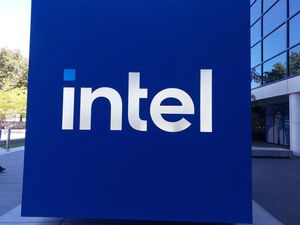~30% relative risk reduction seen in symptomatic ischemic strokes in three milvexian arms compared to placebo; dose response not observed for primary study objective
No fatal bleeding and no increase in symptomatic intracranial hemorrhage observed in patients treated with milvexian, even with all patients receiving 21 days of background dual antiplatelet therapy followed by single antiplatelet therapy
Data from Phase 2 AXIOMATIC-TKR and -SSP studies collectively demonstrate potential of milvexian in thromboembolic diseases and warrant further investigation in Phase 3 studies
Bristol Myers Squibb (NYSE: BMY) in collaboration with Janssen Pharmaceuticals, Inc., one of the Janssen Pharmaceutical Companies of Johnson & Johnson (Janssen), today announced results from the Phase 2 AXIOMATIC-SSP dose-ranging study of the investigational oral factor XIa (FXIa) inhibitor, milvexian, which showed an approximate 30% relative risk reduction in recurrent symptomatic ischemic strokes and favorable safety profile in three arms compared to placebo when used in combination with background antiplatelet therapy in patients with an acute non-cardioembolic ischemic stroke or transient ischemic attack.
The primary objective of this study was to detect a dose response for the composite endpoint of symptomatic ischemic stroke + MRI detected covert brain infarction across a 16-fold dose range; a dose response was not observed. A relative risk reduction of approximately 30% in symptomatic ischemic stroke with milvexian was observed in patients receiving either 25, 50 or 100 mg twice daily compared to placebo.
These data were presented today in a Hot Line session at the European Society of Cardiology (ESC) Congress 2022.
“Early stroke recurrence after ischemic stroke or transient ischemic attack (TIA) remains a significant risk despite advances in secondary prevention. Due to bleeding concerns, there are currently no anticoagulants used when a patient suffers an acute non-cardioembolic ischemic stroke; however, these data suggest that milvexian has potential to improve outcomes for stroke patients in clinical practice,” said Mukul Sharma, M.D. MSc, FRCPC, Director of the Stroke Program at McMaster University, Population Health Research Institute and Hamilton Health Sciences.i “The most important factor for stroke clinicians is the ability to reduce the risk of symptomatic ischemic stroke, and the AXIOMATIC-SSP study demonstrates this potential benefit with milvexian without increase of symptomatic intracranial hemorrhage or fatal bleeding.”
There was no increase in severe bleeding (e.g., symptomatic intracranial hemorrhage) versus placebo, and there was no fatal bleeding in any arm of the study, even with all patients on background dual antiplatelet therapy for 21 days followed by single antiplatelet therapy for the duration of the trial. The rate of major bleeding for milvexian 25 mg once daily and twice daily doses was similar to placebo, while a numerical increase was observed in milvexian dose arms of 50 mg twice daily and above, with no dose-response.
|
Placebo |
Milvexian |
||||
QD Regimen |
BID Regimen |
|||||
25 mg
|
25 mg
|
50 mg
|
100 mg
|
200 mg**
|
||
EFFICACY |
||||||
Evaluable Population |
n = 625 |
n = 308 |
n = 287 |
n = 306 |
n = 277 |
n = 317 |
Patients with composite event, % |
16.6 |
16.2 |
18.5 |
14.1 |
14.8 |
16.4 |
Symptomatic ischemic stroke |
6.1 |
4.9 |
4.2 |
4.2 |
4.0 |
8.5 |
Covert brain infarcts |
10.6 |
11.4 |
14.3 |
9.8 |
10.8 |
7.9 |
Relative Risk (RR) § |
|
0.99 |
0.99 |
0.93 |
0.92 |
0.91 |
95% CI for RR |
|
(0.87, 1.10) |
(0.84, 1.16) |
(0.76, 1.17) |
(0.73, 1.19) |
(0.70, 1.32) |
ITT Population |
n = 691 |
n = 328 |
n = 318 |
n = 328 |
n = 310 |
n = 351 |
Symptomatic ischemic stroke incidence rate* |
5.5% |
4.6% |
3.8% |
4.0% |
3.5% |
7.7% |
Relative Risk (RR) |
|
0.83 |
0.69 |
0.72 |
0.65 |
1.40 |
95% CI for RR |
|
(0.46, 1.49) |
(0.36, 1.30) |
(0.39, 1.33) |
(0.33, 1.25) |
(0.87, 2.25) |
SAFETY |
||||||
Treated Population |
n = 682 |
n = 325 |
n = 313 |
n = 325 |
n = 306 |
n = 344 |
Major (BARC Type 3 and 5) Bleeding |
|
|
|
|
|
|
Composite event rate, n (%)
|
4 (0.6) [0.2, 1.5] |
2 (0.6) [0.1, 2.2] |
2 (0.6) [0.1, 2.3] |
5 (1.5) [0.5, 3.6] |
5 (1.6) [0.5, 3.8] |
5 (1.5) [0.5, 3.4] |
Type 3, n (%) |
4 (0.6) |
2 (0.6) |
2 (0.6) |
5 (1.5) |
5 (1.6) |
5 (1.5) |
Type 5, n (%) |
0 |
0 |
0 |
0 |
0 |
0 |
*No hemorrhagic strokes occurred.
|
||||||
BARC Type 3 includes three subtypes: |
||||||
|
||||||
BARC Type 5 = Probable fatal bleeding or definite fatal bleeding (overt or autopsy or imaging confirmation)
§ Based on multiple Comparison Procedure – Modelling (MCP-Mod) analysis |
||||||
“Secondary strokes continue to be a serious health risk for stroke patients and we believe these data demonstrated the potential of milvexian to address a key unmet need in this population,” said Puneet Mohan, MBBS, M.D., Ph.D. vice president, Milvexian Clinical Development, Bristol Myers Squibb. “The AXIOMATIC-SSP results, together with previously reported findings from the Phase 2 study of milvexian in total knee replacement, further reinforce our confidence in this asset and we expect to initiate our broad Phase 3 program later this year.”
The AXIOMATIC-SSP study is the second study to read out from the AXIOMATIC program and completes milvexian’s Phase 2 development.
Bristol Myers Squibb and Janssen thank the patients and investigators involved in the AXIOMATIC Phase 2 clinical trials.
About AXIOMATIC-SSP
AXIOMATIC-SSP is a Phase 2, global, randomized, double-blind, placebo-controlled, dose-ranging study that evaluated the efficacy and safety of milvexian, an oral factor XIa (FXIa) inhibitor, for the prevention of new symptomatic ischemic stroke or new covert brain infarction in patients receiving aspirin and clopidogrel following acute ischemic stroke or transient ischemic attack (TIA). The primary endpoint was the composite of new symptomatic ischemic stroke and new covert brain infarction detected by MRI at Day 90.
A total of 2,366 patients were randomized 2:1 to receive one of five regimens of oral milvexian covering a 16-fold dose range given once- or twice-daily. All participants received background treatment with open-label aspirin and clopidogrel for 21 days, followed by open-label aspirin from Day 22 to Day 90.
About AXIOMATIC-TKR
AXIOMATIC-TKR was a Phase 2, randomized, open-label, parallel-group, dose-ranging multicenter study that evaluated the efficacy and safety of milvexian, an oral factor XIa (FXIa) inhibitor, versus subcutaneous enoxaparin in patients undergoing elective total knee replacement (TKR) surgery. The primary efficacy outcome was the incidence of total venous thromboembolism (VTE) up to 14 days. The principal safety outcome was any bleeding, defined as the composite of major, clinically-relevant nonmajor and minimal bleeding.
A total of 1,242 patients were randomized to receive one of seven regimens of oral milvexian given twice- or once-daily or to receive 40 mg of subcutaneous enoxaparin once-daily. The assignment to milvexian or enoxaparin was open label while the milvexian dose assignment was blinded. Treatment was given for 10-14 days. In this study, milvexian demonstrated efficacy and no increase in bleeding across doses, with no major bleeds in the milvexian arms, when compared with enoxaparin, for postoperative VTE prevention in patients undergoing elective TKR surgery. Results from AXIOMATIC-TKR were simultaneously published in The New England Journal of Medicine and presented at the American Heart Association Scientific Sessions 2021. More information can be found on http://www.clinicaltrials.gov (NCT03891524).
About Milvexian*
Milvexian is a potential first-in-class oral factor XIa (FXIa) inhibitor (anti-thrombotic) being studied for the prevention and treatment of major thrombotic conditions. Phase 2 total knee replacement (TKR) and secondary stroke prevention (SSP) data, complementing human genetic, epidemiologic, and preclinical evidence, now provide further support for the hypothesis that inhibiting FXIa can reduce the risk of vascular events without increasing the risk of bleeding. The milvexian Phase 2 clinical trial program consists of two Phase 2 studies: AXIOMATIC-TKR (NCT03891524) evaluating milvexian in TKR surgery and AXIOMATIC-SSP (NCT03766581) evaluating milvexian for SSP.
*Milvexian is an investigational agent and has not been approved for use in any country, for any indication.
About the Bristol Myers Squibb/Janssen Collaboration
Bristol Myers Squibb and one of the Janssen Pharmaceutical Companies of Johnson & Johnson (Janssen), two established leaders in thrombosis management, are dedicated to advancing future treatments that could improve care for underserved patients. The collaboration to develop and commercialize milvexian aims to leverage the combined scientific heritage and world-class commercial capabilities of each company, all in service of improved patient outcomes. The alliance is uniquely equipped to deliver on the promise of FXIa inhibitors and is working diligently to ensure cutting-edge safe and effective treatment options are available for patients.
About Bristol Myers Squibb
Bristol Myers Squibb is a global biopharmaceutical company whose mission is to discover, develop and deliver innovative medicines that help patients prevail over serious diseases. For more information about Bristol Myers Squibb, visit us at BMS.com or follow us on LinkedIn, Twitter, YouTube, Facebook and Instagram.
Cautionary Statement Regarding Forward-Looking Statements
This press release contains “forward-looking statements” within the meaning of the Private Securities Litigation Reform Act of 1995 regarding, among other things, the research, development and commercialization of pharmaceutical products. All statements that are not statements of historical facts are, or may be deemed to be, forward-looking statements. Such forward-looking statements are based on current expectations and projections about our future financial results, goals, plans and objectives and involve inherent risks, assumptions and uncertainties, including internal or external factors that could delay, divert or change any of them in the next several years, that are difficult to predict, may be beyond our control and could cause our future financial results, goals, plans and objectives to differ materially from those expressed in, or implied by, the statements. These risks, assumptions, uncertainties and other factors include, among others, that future study results may not be consistent with the results to date, that milvexian may not achieve its primary study endpoints or receive regulatory approval for the indication described in this release in the currently anticipated timeline or at all, that any marketing approvals, if granted, may have significant limitations on their use, and, if approved, whether such product candidate for such indication described in this release will be commercially successful. No forward-looking statement can be guaranteed. Forward-looking statements in this press release should be evaluated together with the many risks and uncertainties that affect Bristol Myers Squibb’s business and market, particularly those identified in the cautionary statement and risk factors discussion in Bristol Myers Squibb’s Annual Report on Form 10-K for the year ended December 31, 2021, as updated by our subsequent Quarterly Reports on Form 10-Q, Current Reports on Form 8-K and other filings with the Securities and Exchange Commission. The forward-looking statements included in this document are made only as of the date of this document and except as otherwise required by applicable law, Bristol Myers Squibb undertakes no obligation to publicly update or revise any forward-looking statement, whether as a result of new information, future events, changed circumstances or otherwise.
__________________________
i Dr. Sharma is affiliated with McMaster University, and was provided payment for his participation in the Phase 2 AXIOMATIC-SSP clinical trial.
View source version on businesswire.com: https://www.businesswire.com/news/home/20220827005002/en/
$BMY announces results from second Phase 2 study of investigational factor XIa inhibitor, in collaboration with @JanssenGlobal at #ESCCongress
Contacts
Bristol Myers Squibb
Media Inquiries:
media@bms.com
Investors:
investor.relations@bms.com







